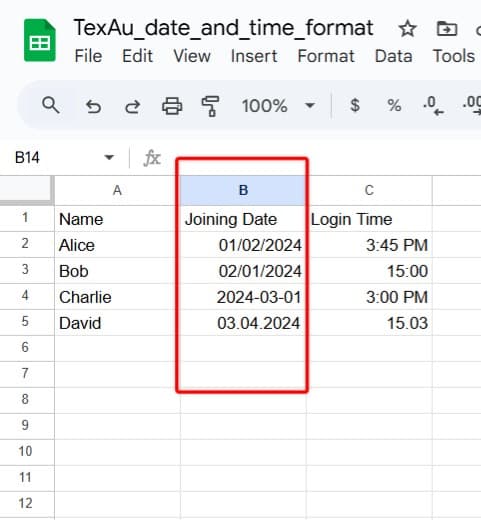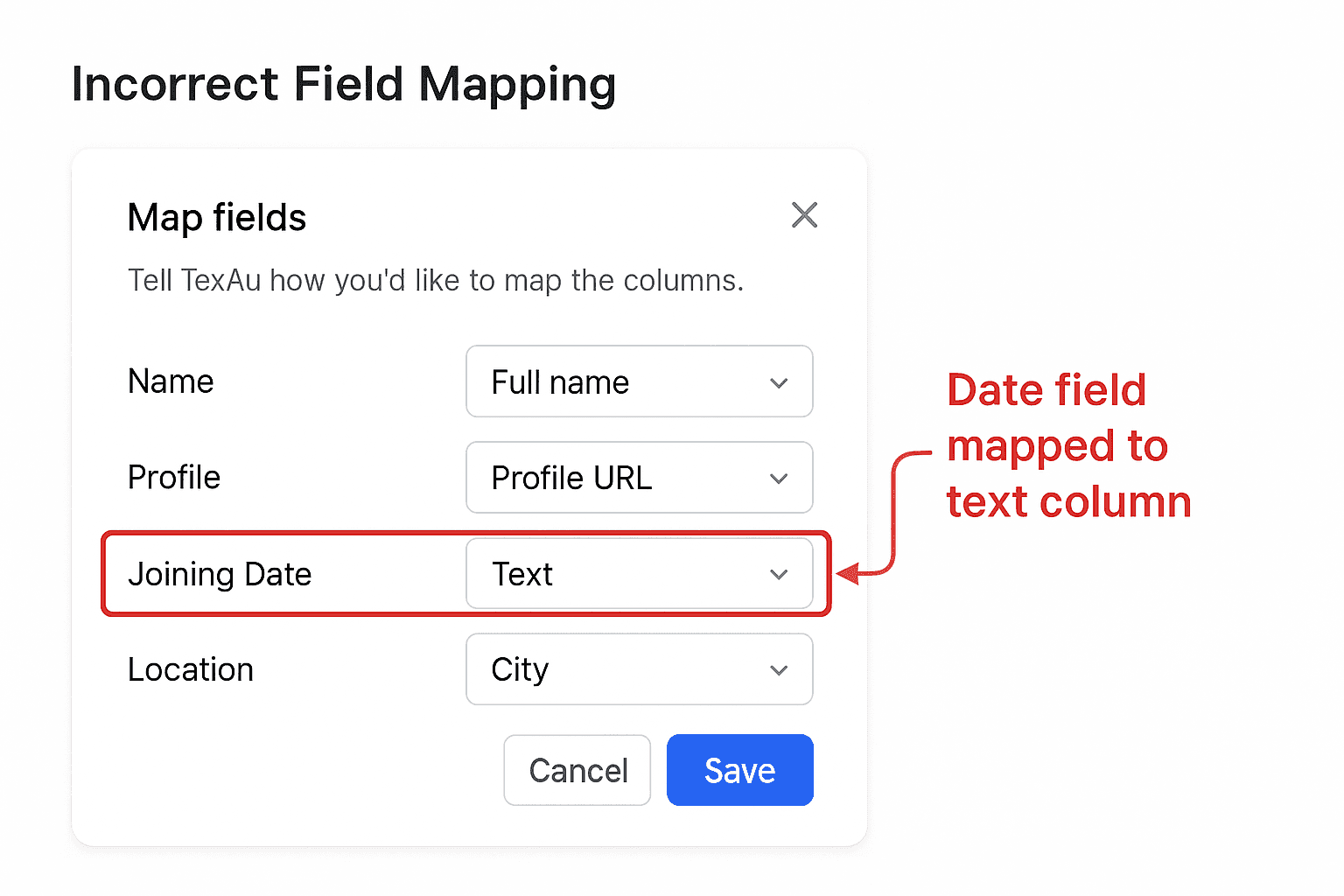Fix Date or Time Issues in TexAu Workflow Outputs
TexAu uses automation to collect, process, and export data, and sometimes, the date or time format may appear incorrect due to input settings, system defaults, or output formatting.
This article will guide you on identifying and fixing those values effectively.
Common Reasons for Incorrect Date/Time
1. Wrong Input Format
If your input file (CSV or Google Sheet) has inconsistent date or time formats (e.g., DD/MM/YYYY vs MM/DD/YYYY), the workflow may misinterpret or shift the values. Ensure the input format is consistent across all rows before uploading.

2. Timezone Mismatch
TexAu runs on a UTC-based system. If your browser or device is set to a different timezone, the exported data may not match your local time. This is common when extracting timestamps from platforms like Twitter.
3. Incorrect Field Mapping
During workflow setup, if a date or time field is mapped to the wrong column (e.g., a text column instead of a date column), the result may appear broken or as a string.

How to Fix the Values
Step 1: Check the Input Source
Open your CSV or Sheet and confirm that all date/time values follow one consistent format, such as YYYY-MM-DD or HH:MM:SS.
Step 2: Adjust Workflow Steps (if applicable)
If your workflow includes custom steps like Prompt Builder, ensure you're not modifying date formats mid-way. Keep all values in standard format to avoid parsing errors.
Step 3: Format Output After Download
TexAu exports raw data. Once downloaded, you can format the date or time fields in Excel or Google Sheets using native formatting tools.
Best Practices
- Use ISO format (YYYY-MM-DD) wherever possible.
- Avoid adding custom formatting within TexAu unless necessary.
Check the sample output in the Datastore preview before exporting the full file.
Still facing issues?
If your date or time values still look incorrect after trying these steps, contact our support team, we’re here to help you fix it further.


